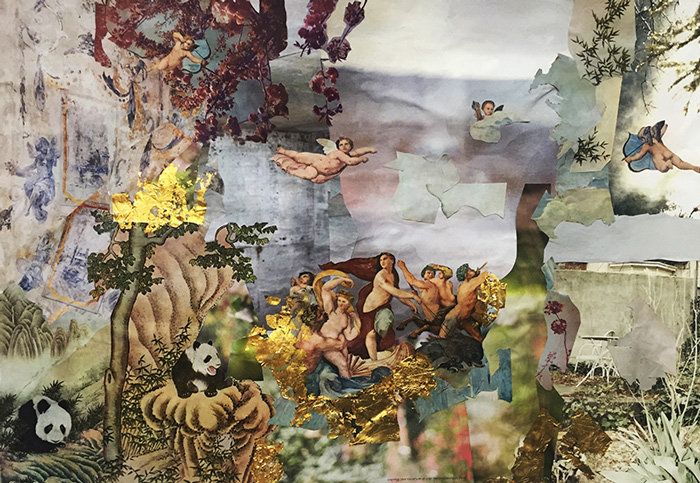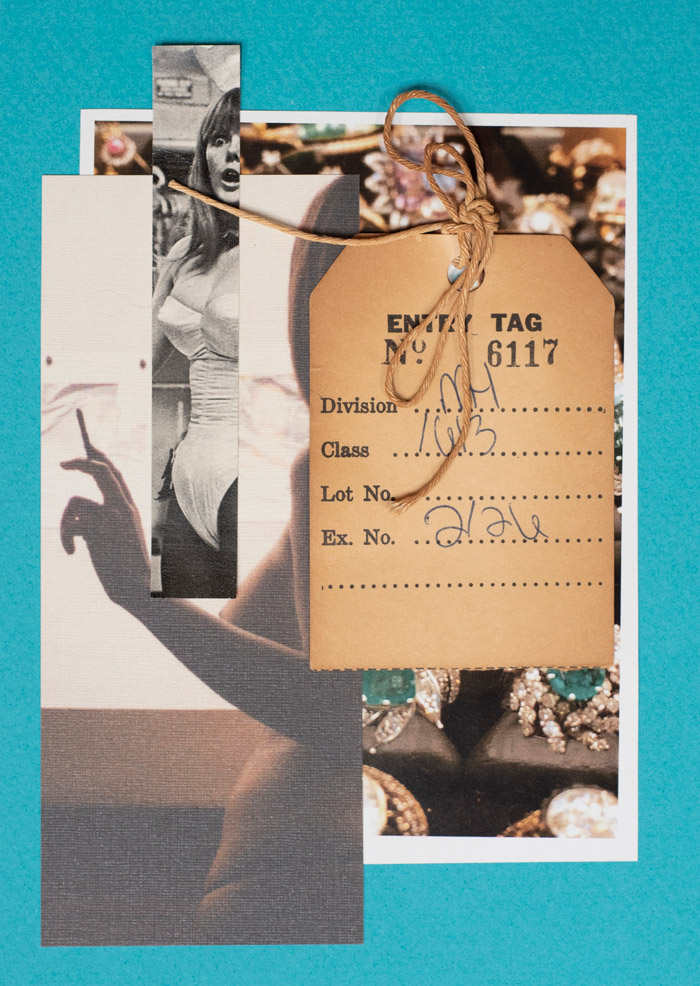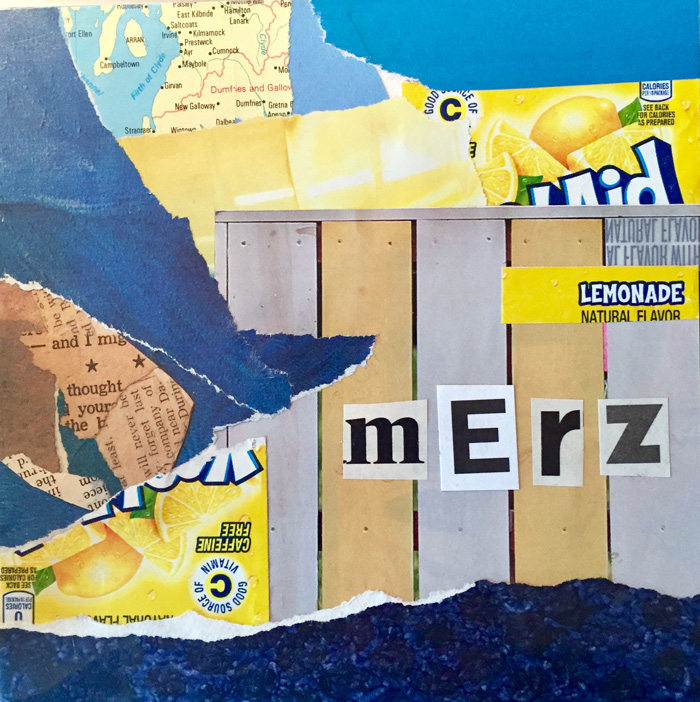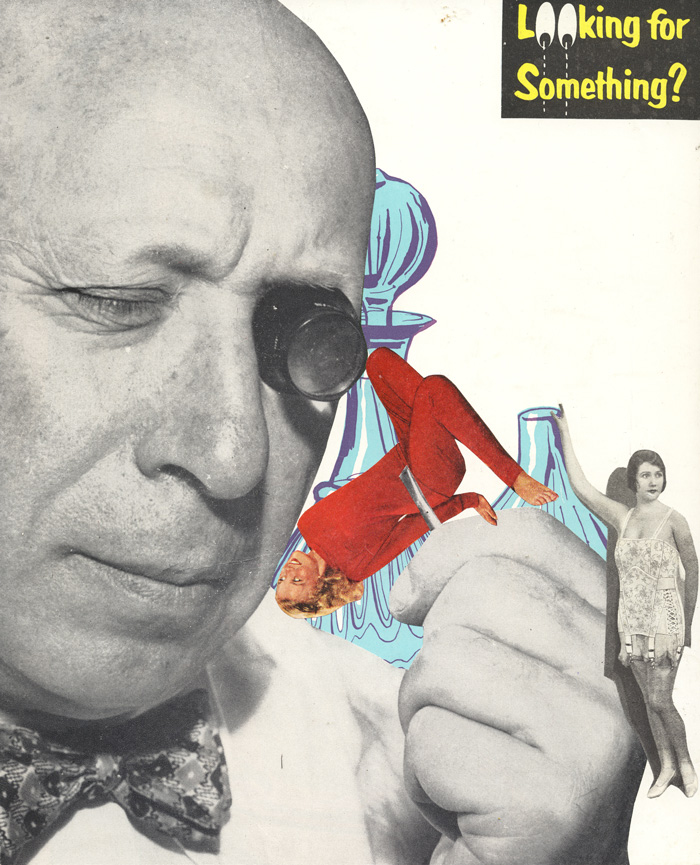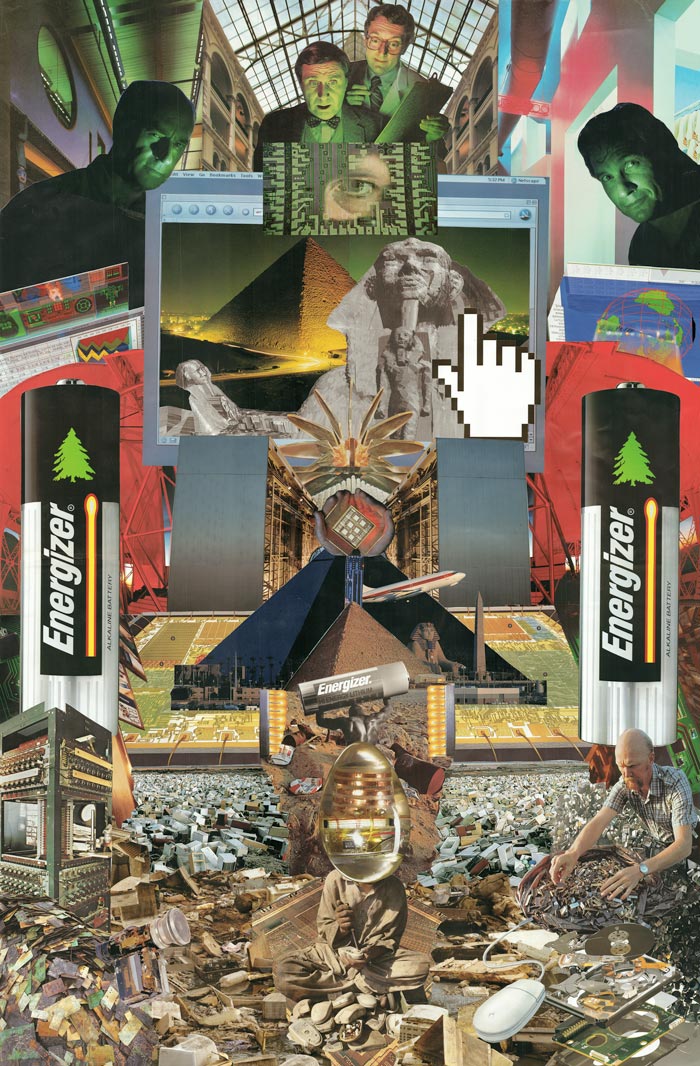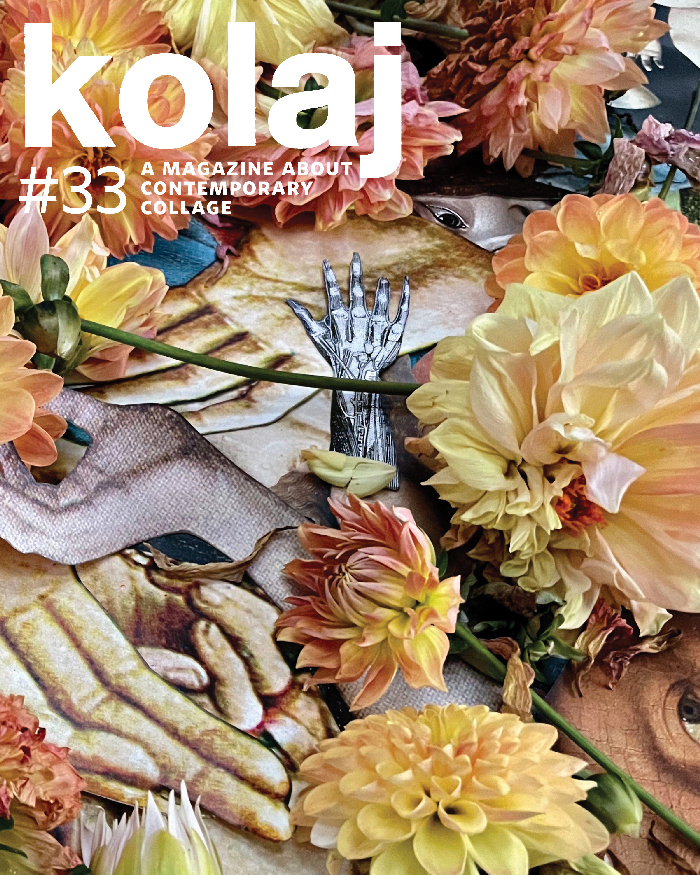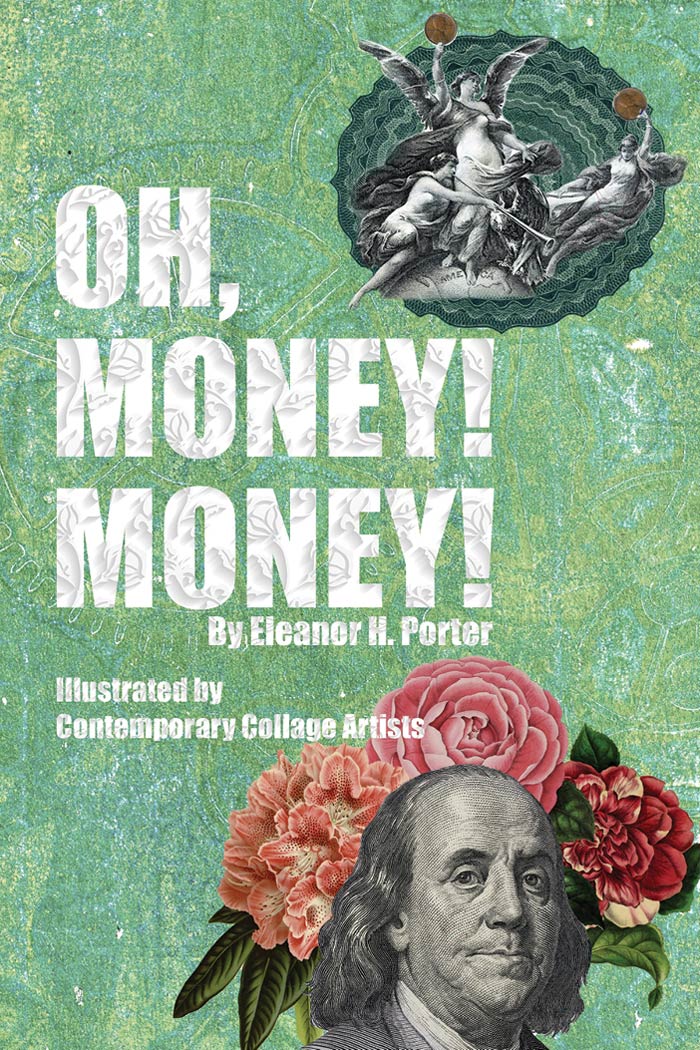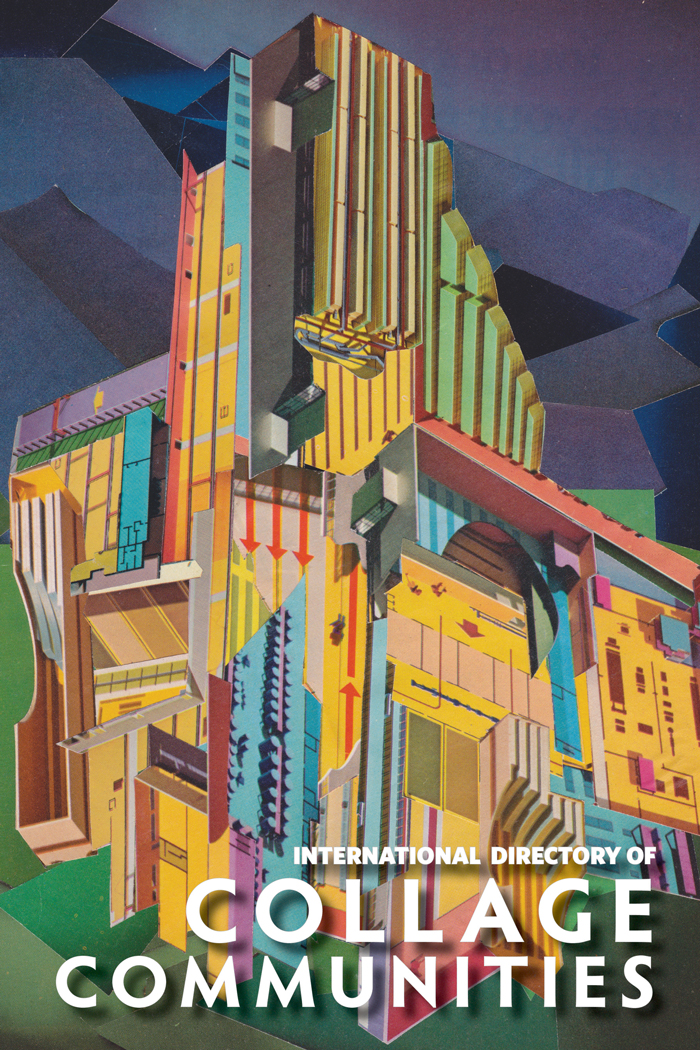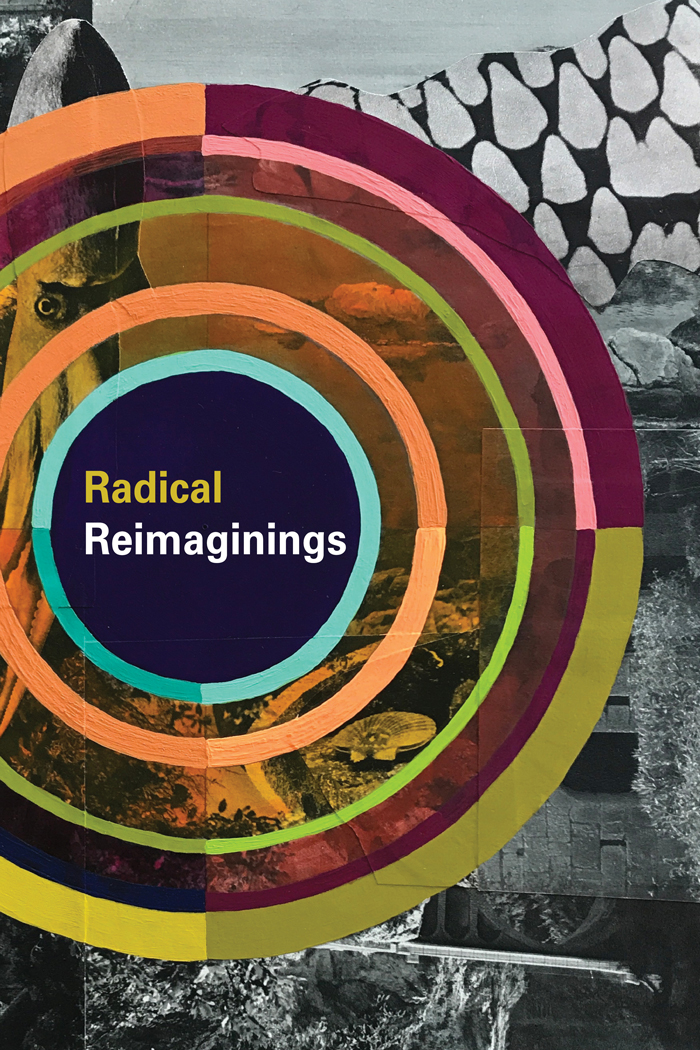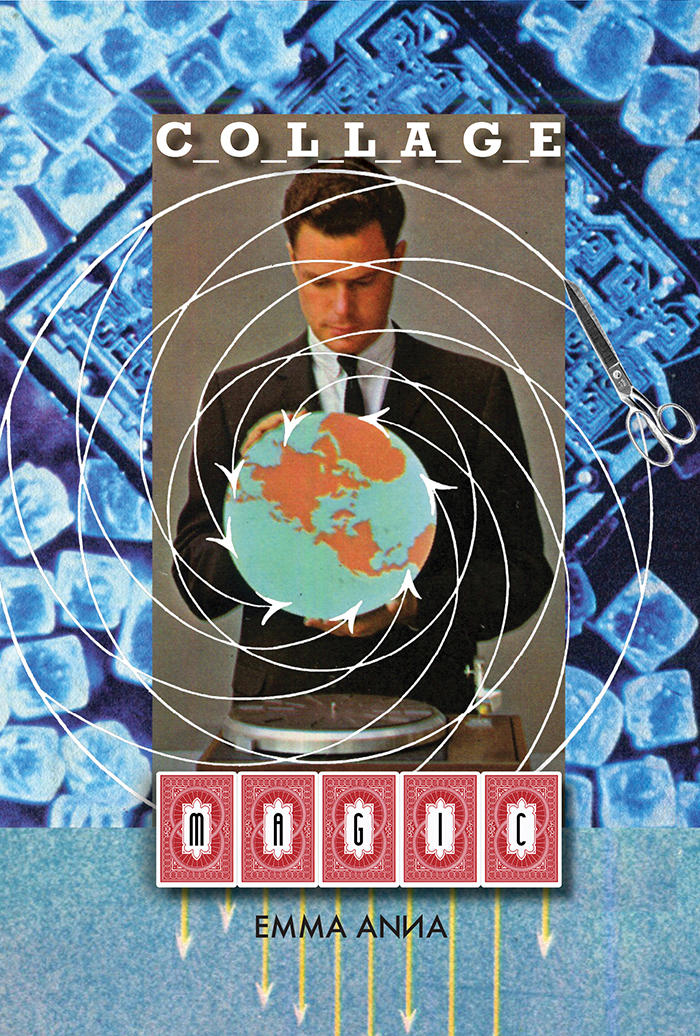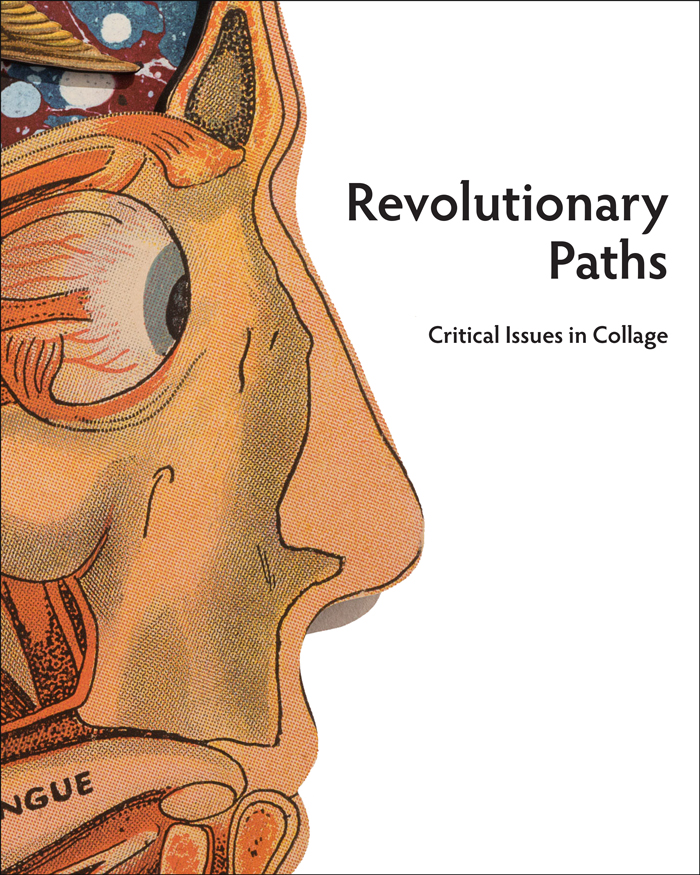![]()
MAGAZINE | INSTITUTE | CURRENT ISSUE | ARTIST DIRECTORY | SHOP
KOLAJ LIVE ONLINE | KOLAJ LIVE KNOXVILLE
FROM THE ARTIST DIRECTORY
Positive and Negative
Brooklyn, New York, USA. Julie Eisenberg Pitman creates bold, immersive and semi-abstract collages. She is inspired by fantasy, allegory, positive and negative, and patterns that are a part of her everyday. Eisenberg Pitman describes her method as one of “re-conceptualization” of what appears familiar in day-to-day life. She favors the use of commonly found-though-unconventional artistic materials, like discarded periodicals, playbills, comics, catalogues, and empty space. MORE
FROM THE ARTIST DIRECTORY
Received Notions
Albion, California, USA. Emily Hoerdemann’s work seeks to interrogate and overturn received notions of femininity. It seeks to puncture narratives of cultural toxicity and detonate conventions of the cult of domesticity and prescribed gender roles. By recontextualizing artifacts associated with earlier generations of female practice and portrayal, such as sewing notions, cookbooks, the practice of scrapbooking or vintage pornography, Hoerdemann reclaims them for the purpose of empowerment. MORE
FROM THE ARTIST DIRECTORY
Connections
Providence, Rhode Island, USA. Heather J. Annis recalls being a child and pasting images crudely cut from a book of wallpaper samples onto cardboard. These creations remind her of the importance of experimenting and remaining open to new ideas and materials. Her particular passion is connecting people of all ages with the arts, most especially those who consider themselves “uncreative” or “non-artists”. MORE
FROM THE ARTIST DIRECTORY
...And then a crack appears
Malmö, Sweden. Kristian Ingers loves how directly collages speak to him. The process takes him from thrift shops and postcard auctions to work in his studio. He's especially fond of how one can organize around a composition, logically and intuitively, but then it all goes askew and a sense that there is a crack appears. MORE
FROM THE ARTIST DIRECTORY
Absurdities & Injustice, Beauty & Aesthetics
Portland, Oregon, USA. Lulu Ludlum creates collages that point to the absurdities and injustices of our world, as well as collages that are purely about beauty and aesthetics. To create her collages, she hand cuts and combines vintage and new papers, including magazines, catalogs, books, wrapping paper, greeting cards, postcards, playing cards, and sewing patterns. Themes of Lulu's recent collages included the wildfires, the postal service, feminism, politics, and the coronavirus. MORE
FROM THE ARTIST DIRECTORY
The American Dream
Northampton, Massachusetts, USA. Michael Mosher’s practice primarily consists of hand-cut collages that depict and comment on aspects of American culture using the compositional tools of religious iconography. His work explores religious themes in modern times, specifically the ways in which capitalism, politics, technology, and pop culture mirror or emulate qualities of organized religion. Mosher finds a balance between the contemplative practice of collecting, cataloging, cutting, and arranging the paper elements and the intellectual act of distilling current events and social commentary through collage. MORE
FROM THE ARTIST DIRECTORY
Influence or Adaptation
Shchyolkovo, Moscow Oblast, Russian Federation. Yulia Lenina explores topics such as human interaction with the universe, trust in the world, and the phenomenon of chance. Lenina often asks herself “where is the line between chaos and control, chance and fate? When can I influence the result, and when can I just accept the situation and adapt to it?” MORE
Current Issue of the Print Magazine
Our goal with every issue is that Kolaj Magazine is essential reading for anyone interested in the role of contemporary collage in art, culture, and society. We not only hope you enjoy the articles and images in Kolaj #33, we hope it leads you to asking great questions.
PRINT MAGAZINE
Kolaj 33
Handling from “The Lives of Dahlias” series by Leslie Fry is on the cover of Kolaj 33. The blending of human, natural, and architectural motifs is a hallmark of Surrealism. Fry steps into this arena with a sword of feminist thinking and cuts through the dogma. Her work shows how Surrealism can reorient our thinking about nature. An article about her work appears in the issue.
Each issue of Kolaj Magazine shows how collage artists are making their way through the world. International in scope, we explore all aspects of collage and its impact on society and culture. MORE
Recent Publications
NEW BOOK
Oh, Money! Money!
by Eleanor H. Porter
Kolaj Institute is pleased to announce the publication of Oh, Money! Money!by Eleanor H. Porter and illustrated by a collective of collage artists. In Porter’s 1918 novel, a Chicago multi-millionaire struggles to decide to whom he should leave his money. The book is a time capsule of early 20th century American life with a strong focus on the lives of women and observations about material culture and communities before the rampant consumerism of the 1920s and the Great Depression. To illustrate the book, Kolaj Institute organized a residency that brought together ten artists who worked collaboratively to make sixty-three collages that interpret Porter’s novel for a 21st century audience. MORE

FROM ARTSHOP
Kolaj Year Eight Collectors Pack
NOW AVAILABLE! The Kolaj Magazine Year Eight Collectors Pack includes Issues 29, 30, 31, and 32. Our goal with every issue is that Kolaj Magazine is essential reading for anyone interested in the role of contemporary collage in art, culture, and society. MORE
BOOK
The Money $how: Cash, Labor, Capitalism & Collage
The Money $how juxtaposes contemporary artwork against fragments of history and literature as a way of showing how collage can help us deconstruct culture and understand the world differently. Artists collage dollar bills into flowers and mine material remnants to tell stories about home economics. MORE
SPECIAL EDITION
World Collage Day 2021
In honour of World Collage Day, May 8, 2021, Kolaj Magazine is releasing a special edition of the magazine. The Special Edition is full of Cut-Out Pages and stories from inspiring collage artists. MORE
Note: The World Collage Day Special Edition is not included in a regular Kolaj Magazine subscription.
COLLAGE BOOK
Unfamiliar Vegetables: Variations in Collage
Unfamiliar Vegetables is a collection of collage where each of the fifty artists interpreted, in their own way, Carlotta Bonnecaze’s 1892 Carnival float design Familiar Vegetables. Project organizer Christopher Kurts observed, “Unfamiliar Vegetables is an experiment in controlled chaos….tiny variations within each artist’s creative sphere accumulate until the outcomes are as unique as the people creating them.” MORE
COLLAGE COMMUNITIES
The International Directory of Collage Communities
The 104-page book is a survey of collage networks, guilds, communities, and projects as well as online efforts and groups focused on collage research. For each community, the directory presents their key activities, mission, how to join, and a bit of their history. Copious images illustrate the book. MORE
BOOK
Radical Reimaginings
The curators of the 96-page book invited artists who use collage in their practice to put forward a work of art that offers a visual narrative that speaks to the unprecedented change unfolding in 2020. An essay by Ric Kasini Kadour reflects upon collage's unique ability to imagine new realities. Forty artists from nine countries and multiple Indigenous peoples—Salish-Kootenai/Métis-Cree/Sho-Ban, Tlingit/Nisga’a, Oglala/Lakota, and Seneca Nation—offer a variety of perspectives. The voices of Black, Latinx, Native, and white Americans mingle with those from Chile, Colombia, Mexico, Peru, Argentina, Canada, France, and Germany. Artwork is accompanied by a statement in which the artists describe how they want to reimagine the world. MORE
BOOK
Collage Magic
by Emma Anna
Part autobiography, part fantasy, Emma Anna’s vision of The New Old World (aka The NOW) fuses vintage ephemera with modern imaging technologies. Emma shapes this strange world by using the pen tool from Adobe Photoshop as her magic wand, in the process declaring herself to be a “collage magician”. Part artist book, part document of art making, Collage Magic, from La Casa Verde Editions, is Emma Anna’s journey through magic and art. MORE
BOOK
Revolutionary Paths
When the collage is presented in exhibition, it is often done so without the critical framework granted other mediums. In "Revolutionary Paths: Critical Issues in Collage", exhibition curator Ric Kasini Kadour presents examples of collage that represent various aspects and takes on the medium. Each work in the exhibition represents the potential for deeper inquiry and further curatorial exploration of the medium. MORE
BOOK
Cultural Deconstructions
Collage is unique as a medium in that it uses as its material artifacts from the world itself. To harvest those fragments, the artist must first deconstruct culture; they must select, cut, and remove the elements they do not wish to use and then reconstruct work that tells a new story. In "Cultural Deconstructions: Critical Issues in Collage", exhibition curator Ric Kasini Kadour presents examples of collage artists who are deconstructing identity as a way to critique culture. MORE
Our goal with every issue is that Kolaj Magazine is essential reading for anyone interested in the role of contemporary collage in art, culture, and society. Each issue of Kolaj Magazine is dedicated to reviewing and surveying contemporary collage with an international perspective. We are interested in collage as a medium, a genre, a community, and a 21st century art movement.
